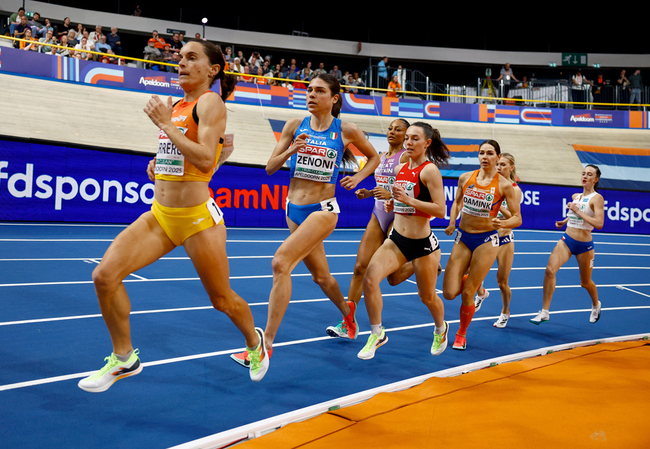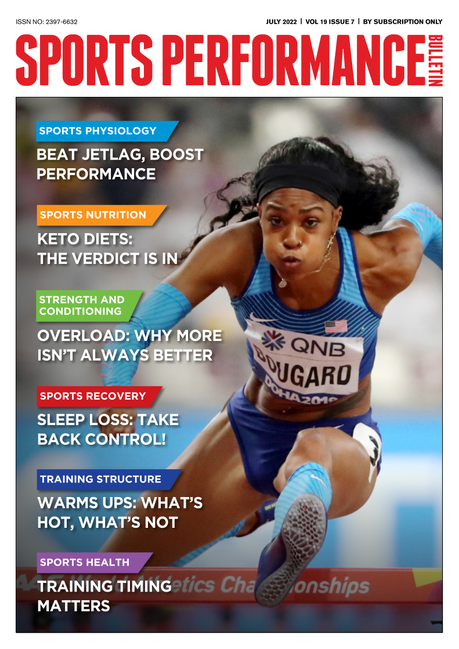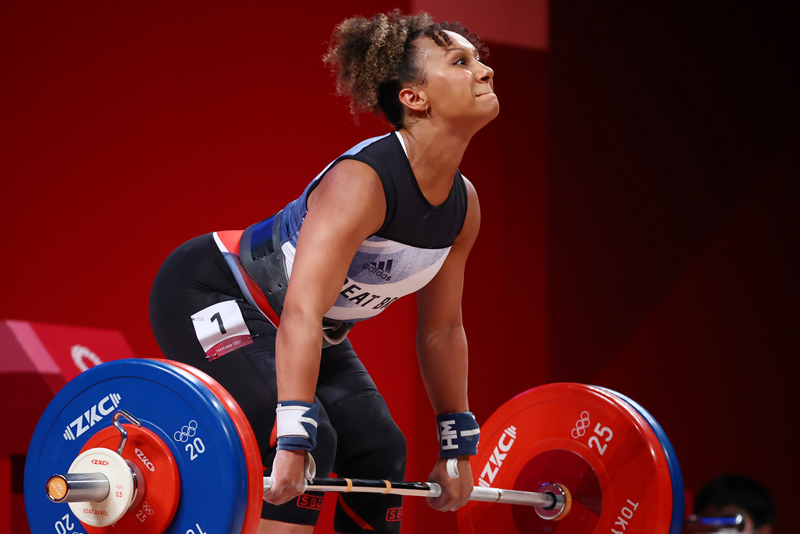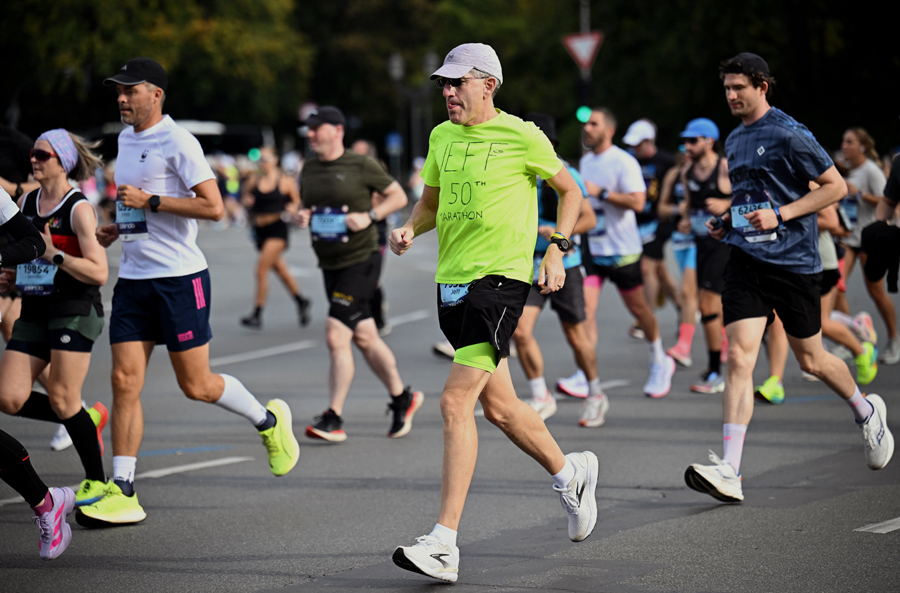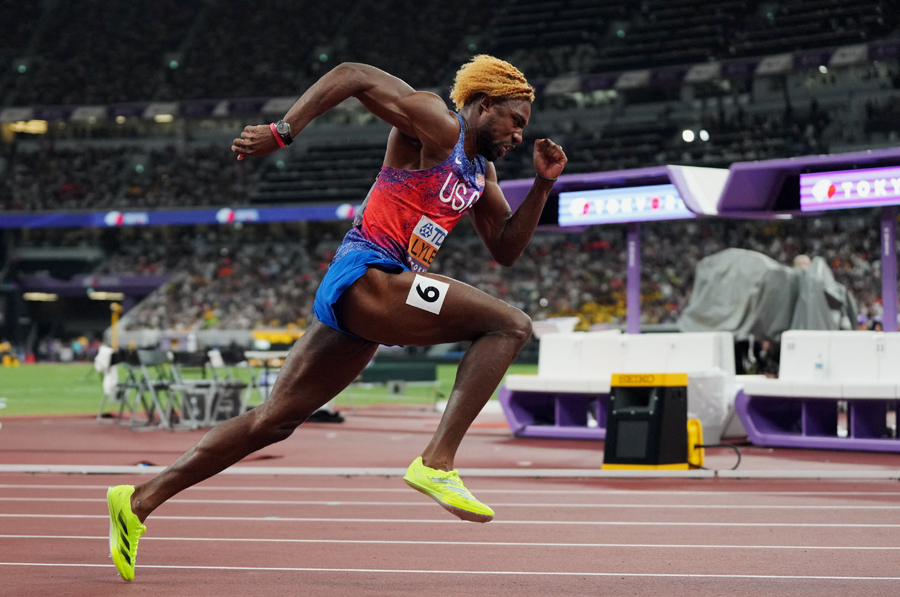You are viewing 1 of your 1 free articles. For unlimited access take a risk-free trial
Interval training: extracting the maximum for performance
SPB looks at new research on how the length of intervals in a training session might impact a key determinant of endurance performance - the ability of your muscles to extract oxygen for energy
Interval training is now a staple in the training programs of just about all athletes. With an increasing awareness of the positive impact of interval training on performance, there has been more and more interest on what type of interval training is ‘best’. Of course, understanding which type of interval training is best requires an understanding of two key facts: firstly, an athlete’s goal must be identified, and secondly, the specific physiological impact of different types of interval training must be understood. Only then can we decide which approach is best.
Goals of interval training
Clarifying an athlete’s goals is typically straightforward, and typically involves enabling athletes to perform faster, longer or both. Identifying the specific physiological impact of different interval training schemes has proven to be less straightforward. Not all interval training is same; for example, it’s intuitive that performing 6 x repetitions of 30 seconds maximal effort with 30 seconds rest is different than performing 8 x repetitions of four minutes with 60 seconds rest. Any athlete who has performed interval training can attest to the different impacts of different interval sessions, and how they can influence performance.
However, while an intuitive understanding of the differences between interval training sessions can be helpful, the more the impact of these training sessions is understood physiologically, the more effective coaches and athletes can be in selecting the most effective training session for the goals at hand. Simple strategies like measuring heart rate and lactate values were initially used to describe these differences, and these measures have been immensely helpful in creating an understanding of how physiology is stressed during interval training.
However, these measurements don’t tell the full tale. Performance in middle distance events requires extremely high rates of energy production, which must be sustained for an extended period of time. These races put maximal pressure on the body’s ability to use oxygen to create energy. The ability to use oxygen to create energy is limited by two factors, the ability to delivery oxygen via the blood, and the ability to muscles to extract oxygen from the blood.
Oxygen use during intervals
To help coaches and athletes maximize the impact of oxygen usage, researchers have typically focused on what they can measure, heart rate and the rate of oxygen usage. It makes sense that large amounts of work at high heart rates and high rates of oxygen usage help athletes develop the ability to use lots of oxygen, and that has indeed proven to be true. However, there’s more to the story. Those approaches emphasize the ability to deliver oxygen. But especially in middle distance events, there’s accumulating evidence that the ability to extract oxygen from the blood is also critical. To determine this, a new measure called ‘muscle deoxygenation’ is being increasingly used by scientists. Muscle deoxygenation measures how much oxygen is extracted from the blood; if more can be extracted, more can be used for creating energy.
Recently, more research has begun to investigate whether different types of training sessions can put more stress on muscle deoxygenation, and if so, which are most effective. Just as spending more time at high heart rates can help train the cardiovascular system to deliver more oxygen, spending more time with greater muscle deoxygenation values can help train an athlete’s ability to extract the delivered oxygen. A key step in improving the effectiveness of interval sessions therefore is to identify which kind(s) of training sessions are effective at producing longer periods of muscle deoxygenation.
New research
To help provides answers, a new study has compared the physiological responses during two different interval training sessions(1). In particular, the researchers were interested in differences in muscle deoxygenation dynamics between the two sessions. If differences did emerge, they wanted to understand if these differences were related to other physiological changes, or if muscle deoxygenation dynamics represented a distinct physiological response.
Thirteen distance middle-distance runners participated in the study. The average best performance time over 1500m for the males was 4mins:00.62secs and the average time for the women was 4mins:53.25secs. All runners had been training consistently for at least two years. The subjects performed two separate interval training sessions within a 3-week window to minimize any changes in fitness or health.
The interval training sessions were as follows:
· 15 x 400-meter repetitions
· 6 x 1,000-meter repetitions
The total volume equaled 6,000 meters in both cases, and the subjects received one minute rest between each repetition during both sessions. The subjects were asked to run each interval at the fastest sustainable speed. In other words, the runners tried to complete session as fast as possible while maintaining performance.
To quantify the physiological response to each session, several measurements were taken. Heart was measured continuously via a heart rate monitor. From this data the highest heart rate during each interval was recorded, as well as the highest heart rate during each recovery period. The time spent above 90% of maximal heart was also calculated from the data to understand how much work the subjects were performing at very high intensities.
Like heart rate, muscle deoxygenation responses were monitored continuously using technology known as wireless near-infrared spectroscopy (NIRS) monitoring. This is an established technology for measuring muscle deoxygenation. A sensor is placed on a given muscle group and oxygen dynamics can be measured through the skin. It’s important to note that the researchers chose to measure the medial gastrocnemius (calf) muscle. This muscle was chosen due to ease of measurement and its importance in running. (Note that NIRS is a local measurement, and data from one muscle cannot be extrapolated to another.)
As well as heart rate and muscle deoxygenation, blood lactate and rate of perceived rate of exertion were also monitored. As these measures can’t be monitored continuously, and some effort is required to take a measurement, they were measured at different points throughout each session. Measurements were taken after every five repetitions in the 400m session and after every two repetitions in the 1000m session, for a total of three measurements per session.
The findings
The results were interesting to say the least. From a pure performance standpoint, the 400m repetitions were run significantly faster than 1,000m, which is not a surprising outcome. Interestingly however, the 400m repetitions became faster over the course of the session whereas there was no change in the speed of the 1,000m repetitions.
Across both conditions, rating of perceived exertion climbed steadily, as did lactate concentrations. However, there were no significant differences in the values between either training session, nor were there any differences in the degree to which these physiological measures changed. Although there were significant differences in speed, there were no significant differences in overall stress as indicated by rating of perceived exertion or lactate values.
Key differences
When it came to the heart rate responses, differences between the sessions begin to emerge. While there was no difference in peak heart rate between the two sessions, the accumulated time spent at greater than 90% of peak heart rate was significantly longer in the 1,000m session compared to the 400m session. In fact, every runner spent more time over 90% of peak heart rate during their 1,000m reps intervals session compared to the 400m rep session.
Where it gets really interesting however is that the muscle deoxygenation responses were reversed. The magnitude of muscle deoxygenation was significantly greater with the shorter intervals, and the time spent with greater than 60% of muscle deoxygenation was also larger with the shorter intervals (see figure 1). While the heart may have been working harder for longer in the longer intervals, oxygen was being depleted to a great degree at the muscular level with the shorter intervals.
Figure 1: Muscle deoxygenation in 1,000m vs. 400m intervals
Left hand graph: 1,000m interval session. Right hand graph: 400m session. Vertical (HHb%) scale = amount of muscle deoxygenation generated. Note that the 400m intervals generated far more accumulated time above the 60% deoxygenation threshold (dotted line) compared to the 1,000m intervals.
It should be emphasized that these results are from the medial gastrocnemius only. Of course, there are other muscles that are critical for running fast, and the response may have been different had those other muscles been measured instead of or in addition to the medial gastrocnemius. However, that is how science works, and as always, more work is necessary to determine whether these findings can be applied to other muscles. Regardless, the findings do demonstrate that local muscle deoxygenation response can differ between training sessions, even when more global measures of physiological stress such as lactate values remain consistent.
Practical applications
As is no surprise to anyone who has actually performed interval training, different interval training sessions don’t have the same impact. That’s not a particularly novel finding. What’s new is quantifying what those specific physiological differences are. It’s not the overall stress in terms of how hard the sessions felt that was different (the lactate responses didn’t demonstrate a meaningful difference). What was different was the stress on the circulatory system, with longer reps challenging the body’s ability deliver oxygen and shorter reps challenging the ability of the muscles to extract that oxygen.
What’s clear from the physiological data therefore is that one type of interval training is not ‘better’ than the other. They both have clear and distinct physiological effects, and selecting the appropriate training sessions comes down to goals. This research better clarifies what’s happening at a physiological level, allowing for more precise selection of interval training sessions.
If you want to challenge your body’s physiology more locally, and target muscle oxygen extraction, shorter intervals seem to be preferable. If you want to challenge the oxygen delivery via improved cardiovascular function, longer intervals may be more appropriate. Of course, both long and short interval lengths will help improve both oxygen delivery to and oxygen extraction from muscles. However, it’s the training adaptation emphasis that seems to shift. More research is needed, but what these findings suggest is that, for middle-distance endurance events at least, both long and short intervals will be required if maximum training adaptations are desired!
Reference
1. Eur J Appl Physiol. 2025 Jul 24. doi: 10.1007/s00421-025-05903-1. Online ahead of print.
Newsletter Sign Up
Testimonials
Dr. Alexandra Fandetti-Robin, Back & Body Chiropractic
Elspeth Cowell MSCh DpodM SRCh HCPC reg
William Hunter, Nuffield Health
Newsletter Sign Up
Coaches Testimonials
Dr. Alexandra Fandetti-Robin, Back & Body Chiropractic
Elspeth Cowell MSCh DpodM SRCh HCPC reg
William Hunter, Nuffield Health
Keep up with latest sports science research and apply it to maximize performance
Today you have the chance to join a group of athletes, and sports coaches/trainers who all have something special in common...
They use the latest research to improve performance for themselves and their clients - both athletes and sports teams - with help from global specialists in the fields of sports science, sports medicine and sports psychology.
They do this by reading Sports Performance Bulletin, an easy-to-digest but serious-minded journal dedicated to high performance sports. SPB offers a wealth of information and insight into the latest research, in an easily-accessible and understood format, along with a wealth of practical recommendations.
*includes 3 coaching manuals
Get Inspired
All the latest techniques and approaches
Sports Performance Bulletin helps dedicated endurance athletes improve their performance. Sense-checking the latest sports science research, and sourcing evidence and case studies to support findings, Sports Performance Bulletin turns proven insights into easily digestible practical advice. Supporting athletes, coaches and professionals who wish to ensure their guidance and programmes are kept right up to date and based on credible science.
